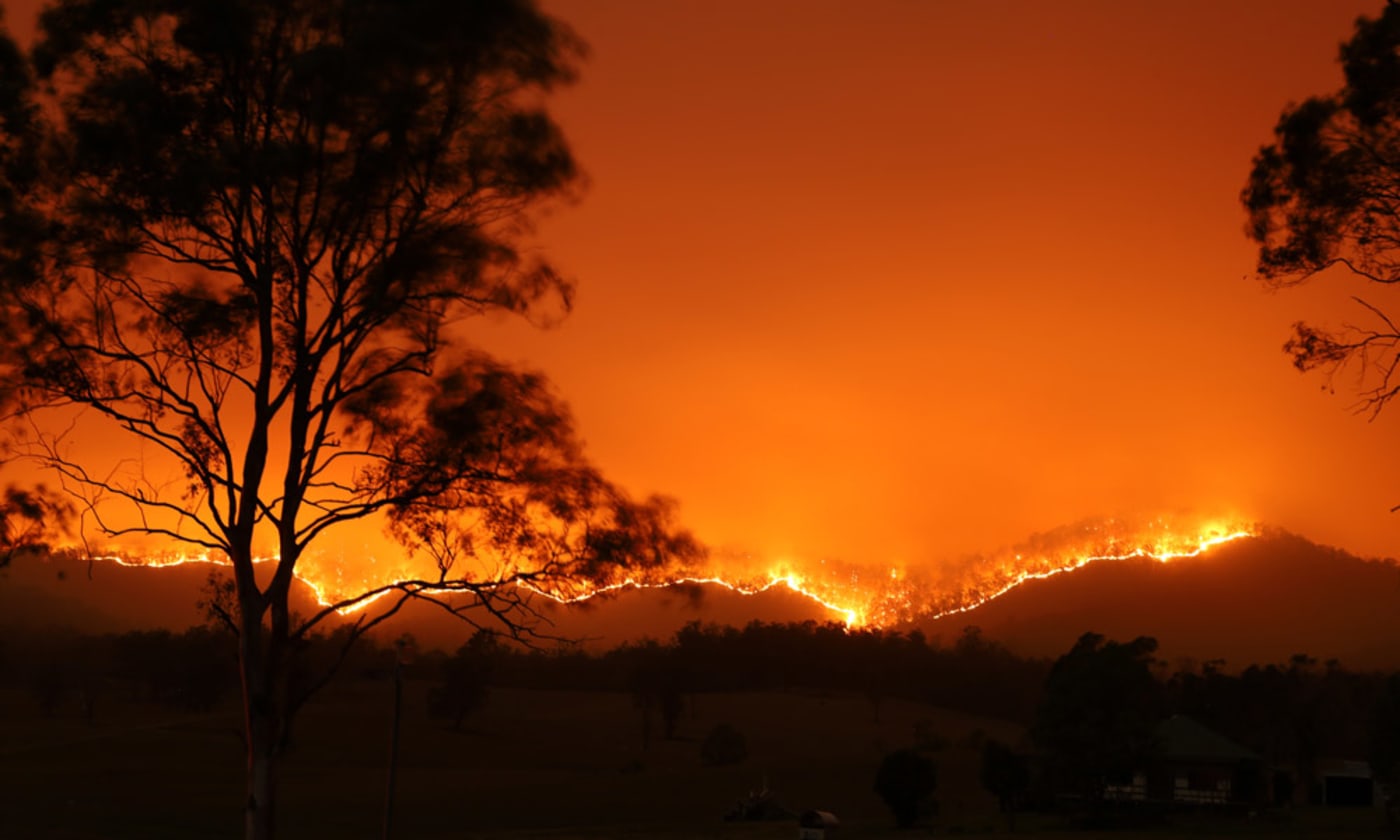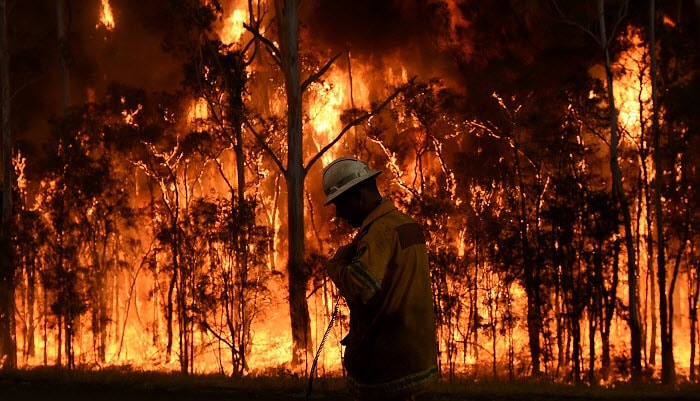Navigating the Demands: Your Overview to Acquiring a BAL Report
Navigating the Demands: Your Overview to Acquiring a BAL Report
Blog Article
Finest Practices in Bushfire Monitoring for Comprehensive Fire Defense
In the realm of bushfire monitoring, the quest for detailed fire protection demands a thorough method that includes numerous essential aspects. From strenuous risk assessment and critical planning to the application of reliable vegetation administration techniques, the range of best practices is elaborate and huge. Area engagement and education play pivotal functions in cultivating resilience and preparedness, while early detection and warning systems function as essential safeguards. In addition, the smooth control of emergency feedback and evacuation strategies is essential for guaranteeing the safety and well-being of individuals when faced with intensifying bushfire dangers. As we navigate with the nuances of these finest techniques, an expedition right into the detailed internet of methods and methods awaits, assuring a deeper understanding of the multifaceted landscape of bushfire management for thorough fire defense.
Threat Evaluation and Planning
In bushfire monitoring for fire defense, the first step includes conducting a comprehensive threat assessment and creating an extensive strategy to mitigate prospective threats. Risk analysis is a vital procedure that involves identifying, analyzing, and examining potential dangers that can lead to a bushfire. This evaluation takes into consideration various aspects such as climate condition, topography, gas lots, and human activities in the area. By comprehending these threats, fire protection authorities can prioritize areas that are most vulnerable to bushfires and allot resources efficiently.
By having a distinct plan in area, emergency solutions can act quickly and efficiently to shield lives, residential property, and the environment throughout a bushfire outbreak. Reliable risk analysis and planning are basic parts of bushfire administration for ensuring detailed fire protection.
Plants Management Approaches
After carrying out a detailed danger evaluation and creating a thorough strategy for bushfire monitoring, the emphasis moves to applying reliable plant life monitoring approaches. Vegetation management plays an important function in minimizing the intensity and spread of bushfires.
In enhancement to producing defensible area, recommended burning is an additional important vegetation management strategy. Prescribed burns involve deliberately setting fires under regulated conditions to reduce the build-up of gas, lower the probability of high-intensity wildfires, and promote community health. By purposefully shedding areas with excess vegetation, gas degrees are minimized, making it harder for fires to spread rapidly and frantically.

Area Involvement and Education And Learning
Reliable area involvement and education and learning are crucial elements in building a durable and positive method to bushfire management. By involving community participants in the preparation and application of bushfire administration techniques, stakeholders end up being active individuals in guarding their areas and homes. Neighborhood engagement fosters a feeling of common duty and equips citizens to take possession of their security.
Education plays a crucial duty in outfitting individuals with the understanding and skills required to alleviate bushfire dangers effectively. Giving academic sources on fire avoidance, discharge procedures, and the relevance of early discovery can dramatically enhance area preparedness. Moreover, enlightening locals on the neighborhood bushfire setting, including fire actions and danger factors, allows them to make informed decisions throughout high-risk scenarios.
Via ongoing engagement and education and learning efforts, areas can develop a collective understanding of bushfire hazards and work collaboratively to lessen the influence of wildfires. By promoting a society of readiness and resilience, area members can improve their capacity to respond successfully to bushfire emergency situations and protect both lives and home.

Early Discovery and Warning Systems
Area interaction and education function as foundational columns in establishing aggressive bushfire administration practices, laying the foundation for the application of robust very early detection and caution systems. Early detection and caution systems are important components in minimizing the effect of bushfires on areas and the atmosphere. These systems incorporate a series of modern technologies and methods aimed at recognizing and alerting authorities and homeowners to potential fire break outs swiftly and effectively.
One crucial element of very early detection systems is the usage of sophisticated surveillance technologies such as satellite images, drones, and climate stations to find signs of prospective fire ignition. These modern technologies provide real-time data that can be examined to identify BMP fire-prone areas and cause early warnings. Furthermore, the assimilation of community-based monitoring networks and automated sharp systems can boost the effectiveness of early discovery initiatives by involving locals in reporting possible fire hazards and obtaining prompt warnings.
Efficient very early discovery and warning systems depend on a multi-faceted strategy that combines technological advancement, area participation, and speedy emergency action methods to ensure the prompt and coordinated management of bushfire events. By buying these systems and promoting partnership between stakeholders, neighborhoods can improve their durability to bushfires and lessen the connected risks.
Emergency Situation Feedback and Emptying Plans
A extensive and well-coordinated emergency situation feedback and discharge plan is essential for properly guarding lives and building throughout bushfire events. These strategies must be carefully crafted, thinking about variables such as the topography of the area, the thickness of plants, and the prospective rate and direction of the fire's spread.
One essential facet of an emergency situation reaction strategy is the establishment of clear communication networks to disseminate prompt and accurate details to locals and emergency situation responders. This can consist of utilizing alarms, mobile notifies, social media, and area meetings to make sure that everyone is educated and knows what activities to take.
Evacuation paths should be pre-identified and regularly preserved to guarantee they come throughout emergencies. Furthermore, marked discharge centers must be developed to offer sanctuary, clinical assistance, and assistance solutions to evacuees.
Regular drills and exercises are essential to acquaint locals with emptying treatments and evaluate the efficiency of the strategy. By continuously examining and upgrading emergency action and discharge strategies, communities can improve their readiness and strength despite bushfire threats.
Final Thought
Finally, efficient bushfire management calls for a thorough technique that includes danger evaluation, greenery management, area engagement, early detection systems, and emergency reaction plans. By executing these finest methods, neighborhoods can better safeguard themselves from the damaging influences of bushfires - BAL Report. It is necessary to focus on positive procedures to alleviate the dangers presented by bushfires and make sure the safety and security and wellness of individuals and neighborhoods in jeopardy
After conducting a complete danger evaluation and developing a comprehensive strategy for bushfire monitoring, the emphasis shifts to implementing effective plant life management strategies.Reliable neighborhood interaction and education browse around this site are crucial parts in developing a resilient and aggressive strategy to bushfire administration. By involving neighborhood members in the preparation and application of bushfire click here to find out more management approaches, stakeholders end up being energetic participants in safeguarding their communities and homes.Area interaction and education offer as foundational columns in establishing positive bushfire administration techniques, laying the groundwork for the execution of robust very early detection and caution systems.In conclusion, reliable bushfire management calls for a comprehensive strategy that includes threat assessment, plants administration, community interaction, very early detection systems, and emergency situation response plans.
Report this page